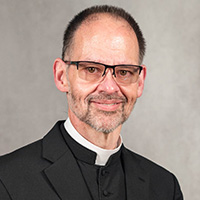 Few people associate McDonald’s with the season of Lent, but the fast-food chain has played a small but iconic role in Lenten history, at least in the United States.
Few people associate McDonald’s with the season of Lent, but the fast-food chain has played a small but iconic role in Lenten history, at least in the United States.
Known primarily for its burgers and chicken nuggets, the restaurant’s “Filet-o-Fish” sandwich is also a classic mainstay on its menu – and it first arose in the early 1960s as a way to boost sales on Lenten Fridays.
According to the company, Lou Groen, an early franchisee based in Cincinnati, ran a McDonald’s in a heavily Catholic neighborhood and observed a decrease in sales at his McDonald’s restaurant on Fridays during Lent.
He proposed to founder Ray Kroc that he allow the restaurant to begin selling fish sandwiches as a way to draw in observant Catholics on Fridays.
Kroc was dubious about adding fish to the menu. Groen would later claim that Kroc told him: “I don’t want my stores stunk up with the smell of fish!”
He and Groen decided to run a test: They’d sell Groen’s fish sandwich on a Friday alongside what Kroc dubbed the “Hula Burger” – a meatless sandwich consisting of grilled pineapple with a slice of cheese on top.
Perhaps unsurprisingly, the Filet-o-Fish won out. In fact, it won massively: In its corporate history McDonald’s says the fish sandwich sold 350 orders, while only six customers purchased a “Hula Burger.”
A few years later, the fish sandwich was the first new dish officially added to the original McDonald’s menu.
The company says it has since become a “popular menu item.” At one point McDonald’s even advertised the sandwich with an anthropomorphic, sharply dressed piece of cod known as “Phil
A. O’Fish.”
The sandwich remains an indelible part of American fast food culture, though it appears to have fallen somewhat out of favor in recent years: AllRecipes earlier this year polled a group of chefs about the “best fast-food fish sandwich,” and the Filet-o-Fish ranked 10 out of 11. Earlier this month, meanwhile, Taste of Home ranked the Filet-o-Fish at the bottom of its list of fast-food fishwiches.
Still, due to its legendary roots, the Filet-o-Fish’s place in both fast-food and Catholic history is assured. Kroc himself must have been aware of its looming historicity in the early 1960s:
McDonald’s says that he was so sure of the success of his Hula Burger that he “made a side bet with his first grillman Fred Turner that the loser would buy the winner a new suit.”
“Fred got a new suit,” company historian Mike Bullington said, “and McDonald’s got the Filet-O-Fish.”
— Catholic News Agency
CHARLOTTE — To some, the word “annulment” evokes images of complicated paperwork or hefty fees. The Diocese of Charlotte Tribunal is working to remove these misconceptions to reflect a more hopeful reality.
And it couldn’t come at a better time for the Tribunal, a type of Church court that assists people in seeking an annulment – the Church’s declaration that a couple was never validly married.
Pope Francis has urged Church leaders to make the annulment process more accessible so that more people can be welcomed back to the Catholic faith – an important aspect of the Church’s 2025 Jubilee Year of Hope. With all the increased attention, the diocese’s Tribunal is working harder than ever to help people, and its caseload is up.
Lisa Sarvis, who has been working in the Tribunal for almost 20 years, recalls a time when couples abandoned their faith or even died during what was a convoluted annulment process. In recent years, the process has dramatically improved, so she now seeks to dispel those old ideas.
“We feel like this is a ministry, and it is not very kind to leave people out there flapping in the breeze,” Sarvis says. “It is a process that must be observed, but we don’t need to stretch it out longer than necessary. Formal cases usually take around seven months; informal, even less.”
Sarvis says the Tribunal has not charged for a case in years.
To bring more Catholics back to the practice of their faith, Pope Francis in 2015 urged tribunals to make annulments more accessible and affordable, and he has reformed some of the Church’s processes to make that happen.
Lately, the Tribunal has seen its caseload double: 150 cases in 2023 have turned into 300 cases currently on hand. The diocese’s booming Catholic population and more general awareness about the annulment process are the reasons why, Tribunal staff note.
The staff of six is not worried about managing the heavier caseload, though.
In line with the pope’s reforms, they have developed an efficient internal process for adjudicating cases, and they have an advocates program that is a model for other dioceses.
Encouraging hope
 Father PutnamFather John Putnam, the diocese’s judicial vicar and judge who presides over annulment cases for the diocese, welcomes the work.
Father PutnamFather John Putnam, the diocese’s judicial vicar and judge who presides over annulment cases for the diocese, welcomes the work.
It especially fits right in with the 2025 Jubilee Year of Hope, he says, because the annulment process encourages people to regain hope in the Church, giving them closure and a fresh start on their faith journey.
“The whole point of the tribunal process is to find the truth of the matter,” he explains. “Was this marriage as the Church understands a marriage to be? In that process, the people involved learn more about themselves, learn more about the Church, and grow in their relationship with God. The goal is the salvation of souls.”
An annulment is a judicial process not intended to find fault, but to discern whether a marriage was valid at its inception according to Church teaching. If the Tribunal determines that the marriage is not valid – based on consent, mindset and other factors – it issues a “declaration of nullity,” which is where the word “annulment” comes from. The petitioners are then free to marry someone else, join a religious order, or simply feel closure and renewed confidence about their place in the Church.
Whatever the reason, the Tribunal is eager to assist people in need, especially anyone who might be reluctant based on myths, fear or misinformation.
An annulment is “not as cumbersome as you think it is,” says George Cobb, special assistant to the Judicial Vicar who also serves as an advocate – a person who helps petitioners file for an annulment and accompanies them throughout the process. “There are people on the local level and the diocese level all trying to help.”
Heart of the Tribunal
 The Tribunal staff praises the diocese’s team of advocates, calling them their “feet on the ground” and the heart of the ministry. Although the team shies away from comparisons with other tribunals, their advocacy program has been widely recognized for its efficiency and copied by others, such as the Archdiocese of Atlanta.
The Tribunal staff praises the diocese’s team of advocates, calling them their “feet on the ground” and the heart of the ministry. Although the team shies away from comparisons with other tribunals, their advocacy program has been widely recognized for its efficiency and copied by others, such as the Archdiocese of Atlanta.
“Without the advocates, we wouldn’t have the workforce to do much of this,” Sarvis points out.
The Tribunal’s Joy Barnes received her own declaration of nullity in 1989, later becoming a Secular Franciscan. Barnes attended Father Putnam’s first advocate class in 2005, and now as advocacy program director she oversees 76 advocates across the diocese.
Every parish in the diocese has a designated volunteer advocate who helps petitioners through the process: 17 are deacons, 18 speak Spanish, two are fluent in Vietnamese. Still, Barnes continually recruits, searching for as many diverse advocates as she can find. A current need is someone who speaks Korean.
In 2007, Barnes revolutionized the advocates program by moving from a physical classroom to a virtual one, with 15 self-paced lessons. In addition, she wrote a 55-page advocates handbook that she sends to every recruit.
Gary Lichtenstein is an advocate for Our Lady of Mercy, St. Benedict the Moor, Good Shepherd, and Holy Angels parishes in the Triad region. Lichtenstein feels he was blessed with the empathy needed to walk people through the annulment process and has no doubt his 56 years of marriage contributes to his success in this ministry.
“Not only do we meet with and instruct a petitioner on what is required to present a petition for nullity, we learn about the difficulty of that person’s life and marital problems,” Lichtenstein says.
Tribunal advocates are the voice of the petitioner. They collect documents, listen to the petitioner’s history, gather evidence and witness statements, find grounds for invalidity, investigate claims, write briefs – pretty much everything an attorney would do in a secular court, except this is a court “on paper” governed by Church law and decided by Church professionals.
Deacon William Shaw, an advocate who serves in far western North Carolina, was drawn to the program in 1974 in a different diocese after seeing faithful Catholics getting terrible advice from family members and others. Annulment myths he heard about excommunication or children becoming illegitimate are completely contrary to Church teaching, so he wanted to guide the people to the truth, he explains.
“It’s a gift to witness the inner healing and transformation of each person that comes forward in faith and hope to be reconnected and reconciled to the sacraments,” Deacon Shaw says. “It is not about receiving a ‘decree of nullity,’ it is about cathartic healing and the reconnection to Jesus and the Church. This for me is the greatest enjoyment.”
Healing and hope brings a tear to Cobb’s eye as he reminisces about the joy of seeing one elderly couple who were able to have a Catholic wedding. “The pastor confirmed that because of the annulment process they were able to marry in the Church. That’s what we are about. To be reconciled together and to be reconciled in the Body of Christ.”
— Lisa Geraci
For more information
Want more information about the annulment process for yourself or others?
Talk to your parish priest or go online to www.charlottediocese.org/offices/tribunal to learn more and find an advocate near you.
Feel called to serve as an advocate? Contact Joy Barnes at This email address is being protected from spambots. You need JavaScript enabled to view it. or 704-370-3373.
Annulment Process
Step 1: Reach out to your parish priest or parish annulment advocate. This person assists the petitioner in completing the application for nullity.
Step 2: The Tribunal contacts the other party (respondent), notifying them that the petitioner has submitted a case and sending a questionnaire. The respondent’s participation is not essential, and a case can proceed without it.
Step 3: Both the petitioner and respondent review each other’s written testimony as well as any witness statements not protected by the seal of confidentiality.
Step 4: The Tribunal notifies both parties of its final decision.


